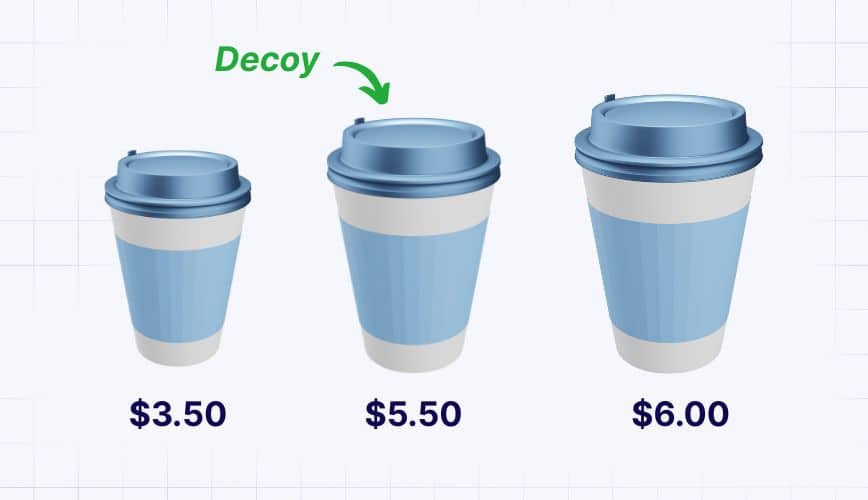A premium pricing strategy is used by sellers of luxury products. It targets affluent customers who particularly value the prestige of owning exclusive items.
In this article, we explore features of premium pricing, its advantages and disadvantages, its practical implementation, and examples of brands that have successfully adopted it.
Contents:
What Is Premium Pricing?
Features of a Premium Pricing Strategy
Examples of Implementing a Premium Pricing Strategy
Tips for Implementing Premium Pricing
Premium Pricing Strategy: Pros and Cons
What Is Premium Pricing?
A premium pricing strategy sets a high price for a product that is positioned as exclusive, luxurious, high-quality, or innovative and high-tech.
This approach is psychologically justified: more expensive products are associated with higher quality, limited access or uniqueness, and the high social status of the owner. They are perceived as more reliable and durable compared to mid-priced goods.
Consumer behavior is driven not so much by the need to purchase such goods as it is by the desire to stand out or express belonging to a particular social group or community that values the same products and brands.
Additionally, some premium products, such as watches, cars, and artwork, can be viewed by buyers as investments that will increase in value over time.
Features of a Premium Pricing Strategy
Luxury pricing has specific features. Premium brand positioning focuses on quality, a strong brand image, and a high level of service and inevitably involves significant marketing expenses.
Setting a premium price is justified if a product is:
- High-quality
- Luxury
- Unique, meaning it has no competitors in the niche or possesses distinguishing characteristics
- Limited or custom-made
Let’s take a closer look at pricing psychology and what buyers are really willing to pay for:
- High quality: Reliability and durability are essential for building customer trust. High-quality products, such as elite watches or custom-made rifles, can last for generations and be passed down as heirlooms. This fosters a base of loyal customers over the long term and lays the foundation for sustainable sales growth.
- Luxury: Premium goods are designed for an elite group of customers and are in demand precisely because of their high cost. The elevated price distinguishes premium goods from the mass market, giving owners a sense of added value and enhancing the image of the owners.
- Uniqueness: A brand offering an exclusive product has no competitors, and buyers have no alternatives. The brand can therefore set a high price, knowing that the customer is ready to pay it. Innovative technologies, patented developments, and collaborations with celebrities all help create exclusivity.
- Product Market Limitation: Limited-edition goods are often highly sought after by collectors or those who value exclusivity. Furthermore, limited availability can increase a product’s value over time, making it a rarity. Some buyers may develop a personal or emotional attachment to limited-edition items, increasing their willingness to invest in them.
These qualities are usually combined, and the high price is an element of the overall marketing strategy for positioning a premium brand on the market.
Difference from Price Skimming
Price skimming is another approach aimed at generating high profits by setting a high price.
What distinguishes prestige pricing from price skimming? With prestige pricing, the price remains consistently high throughout the product’s life cycle. With price skimming, the price decreases over time, as demonstrated by companies like Apple and Dolce & Gabbana. New products from these brands are often innovative or exclusive. However, with the launch of a new iPhone or the introduction of a new D&G collection, the prices of previous models or collections decrease.
Therefore, market segmentation also differs. Luxury goods with premium prices are exclusively aimed at affluent buyers. For instance, Birkin bags not only maintain their value but appreciate over time. In contrast, a price skimming strategy targets a broader range of consumers with varying income levels. The gradual price reduction during a product’s maturity stage (often the longest stage of its life cycle) makes the product appeal to a larger audience.
Examples of Implementing a Premium Pricing Strategy
“There is no substitute” is Porsche’s slogan.
“A Crown for every achievement” is Rolex’s slogan.
This manufacturer of elite sports cars and authoritative watch brand have chosen these words for a reason: They emphasize that the items they sell are exclusive and status symbols, created for rich and successful people. The choice of a premium pricing approach has brought both brands extraordinary success.
Of course, you can get around in a Volkswagen Golf or Kia Forte. But there are customers willing to pay ten times more for a brand-new Porsche or, for example, a Maserati, Bentley, or Rolls Royce. In addition to luxury, the market differentiation of these brands lies in exceptional quality and comfort.
Most people use a smartphone to check the time. However, a Rolex on the wrist immediately signals the owner’s status and achievements. Rolex watches have long crossed the boundary of the device category and become part of a person’s image.
Tips for Implementing Premium Pricing
Let’s start with the main question: When is a high-end pricing strategy superior to others?
This strategy is superior when:
- Customers are willing to pay a high price in your market. Usually this is due to unmet functional, emotional, or other needs.
- You have a unique ability to create a premium product.
- The factor that makes the product premium is a factor that your customers value enough to pay a high price for it.
- Comparing the premium pricing strategy with other strategies gives you better forecasts: higher profit or market share growth.
- There are many customers in your niche who are insensitive to price.
If these conditions do not apply, the best solution would be to distribute your product range across different price segments.
When it comes to implementation, a premium pricing policy is more complex than it appears.
First, you need to find the right balance between price and perceived product value and quality on the part of buyers.
If the price is too high, even affluent customers may find it unjustified and refuse to buy. Conversely, setting the price too low can undermine the product’s premium status. That’s why target audience research is essential.
Second, it is important to know what prices other premium brands set and how they position their products.
Third, it can be difficult to accurately assess how much customers are willing to pay for a product’s unique features. Uniqueness can be subjective, and different consumers may evaluate it differently.
To find the right balance between quality and price perception, it is important to conduct:
- Target audience analysis to determine how much potential buyers are willing to pay
- Competitor price analysis to see how other market players position their products
During the product development stage, attention should be given to design. A product’s design should reflect the brand’s value, be easily recognizable, and emphasize the product’s premium status. For example, the iconic design of Chanel No. 5 perfume is associated with elegance and luxury. Additionally, the tactile sensations a product evokes are crucial.
If a brand releases a product with innovative features, the advertising campaign should be aimed precisely at heating up interest in testing them. For example, Apple creates buzz during the pre-launch of each new product; teaser trailers and announcements create a wave of anticipation among fans and the media. The culmination is the traditional fall presentation, broadcast on the Apple website.
In designing a boutique or flagship store, it’s important to include elements that create a special atmosphere. These could be a creative showcase, sophisticated interior design, expensive finishing materials (valuable woods, marble, etc.), and well-placed lighting accents. Employees should also dress the part, with their attire matching the overall concept.
At the sales stage, it is essential to ensure a flawless customer experience. Customers purchasing premium products have high expectations for service and after-sales support. Some brands highlight the involvement of discerning customers in something greater than just making a purchase, creating a sense of a closed club.
In e-commerce, implementing a premium price positioning strategy involves specific features. Key aspects to consider include an exclusive website design, a strong visual product presentation, a personalized packaging approach, and perfect delivery.
Most importantly, maintaining the brand’s reputation requires continuous effort. Every interaction with customers should be flawless. This dedication pays off in the long term, as a longstanding presence and a perfect market reputation become valuable assets and competitive advantages. Some customers are even willing to overpay for these qualities.
Premium Pricing Strategy: Pros and Cons
We have already seen that a premium pricing strategy requires significant investments in product development, service, packaging, and marketing. Therefore, the question arises: Is it worthwhile? What benefits can it bring to the brand?
Let’s start with the pros.
When implemented correctly, a premium pricing strategy can bring the following benefits to a company:
- Higher profit from each unit sold: Thanks to a high pricing policy, the company secures significant revenue from each item sold. This enables investment in research and development of new products, enhanced customer service, and a stronger brand identity, all of which contribute to further growth and market expansion.
- Loyal and affluent customer base: This positively impacts demand stability and revenue consistency, which are crucial for the company’s long-term financial success.
- Strong brand reputation: The reputation of a luxury product automatically enhances the brand’s value, setting the brand apart from others. Additionally, customers tend to become loyal not just to a specific product but to the entire range of products offered by a company.
- Creating a high entry barrier: High product quality and a corresponding pricing policy make it difficult for competitors to enter the market, compelling them to raise the quality and cost of their products. This enables the company to secure a leading position in its niche.
All this contributes to the brand’s long-term competitiveness.
However, there are also numerous downsides to consider.
Drawbacks and risks of a premium pricing strategy include:
- Dependence on demand and price elasticity: Changes in economic conditions or customer preferences can lead to a significant decline in demand for premium products. For example, during an economic crisis, even affluent consumers may cut back on spending.
- Increased costs: High-quality materials, a skilled team, and expensive advertising campaigns require larger investment in product development, production, and promotion.
- Limited customer base: By targeting a premium market, the brand voluntarily neglects a significant segment of mass-market consumers. This reduces the overall number of customers and, consequently, demand. However, growth is possible by expanding into new geographical markets.
- Competitive pressure: If the niche is filled, market competition can lead to a decrease in the company’s market share.
These aspects should be carefully considered and managed to ensure the successful implementation of a premium pricing strategy.
Conclusion
An exclusive pricing strategy is a powerful tool for companies focused on creating high-quality products. This strategy increases profit per unit sold, establishes a strong brand reputation, and attracts affluent clients. Although it comes with challenges such as increased costs, a well-developed and effectively implemented premium pricing strategy can be the key to long-term success.









